-
 Bitcoin
Bitcoin $105,213.9543
-1.43% -
 Ethereum
Ethereum $2,534.1529
-5.66% -
 Tether USDt
Tether USDt $1.0004
0.02% -
 XRP
XRP $2.1293
-3.62% -
 BNB
BNB $651.6070
-1.04% -
 Solana
Solana $145.6637
-5.96% -
 USDC
USDC $0.9996
-0.01% -
 Dogecoin
Dogecoin $0.1768
-4.52% -
 TRON
TRON $0.2701
-0.48% -
 Cardano
Cardano $0.6330
-5.47% -
 Hyperliquid
Hyperliquid $41.0199
-0.92% -
 Sui
Sui $3.0216
-7.45% -
 Bitcoin Cash
Bitcoin Cash $435.1142
1.00% -
 Chainlink
Chainlink $13.1295
-7.22% -
 UNUS SED LEO
UNUS SED LEO $9.0033
1.58% -
 Stellar
Stellar $0.2582
-4.32% -
 Avalanche
Avalanche $19.0562
-7.26% -
 Toncoin
Toncoin $2.9869
-4.96% -
 Shiba Inu
Shiba Inu $0.0...01192
-3.81% -
 Hedera
Hedera $0.1561
-5.81% -
 Litecoin
Litecoin $84.9066
-3.04% -
 Polkadot
Polkadot $3.7754
-5.29% -
 Ethena USDe
Ethena USDe $1.0002
-0.02% -
 Monero
Monero $308.5756
-4.32% -
 Dai
Dai $0.9997
-0.01% -
 Bitget Token
Bitget Token $4.5027
-2.45% -
 Uniswap
Uniswap $7.3970
-4.96% -
 Pepe
Pepe $0.0...01090
-7.41% -
 Aave
Aave $279.5603
-5.99% -
 Pi
Pi $0.5658
-8.02%
How to calculate the handling fee of Coinbase contract? What are the differences between different levels of fees?
Coinbase contract handling fees vary based on trading volume, transaction type, and payment method; understanding these can help minimize costs.
Apr 28, 2025 at 11:00 am
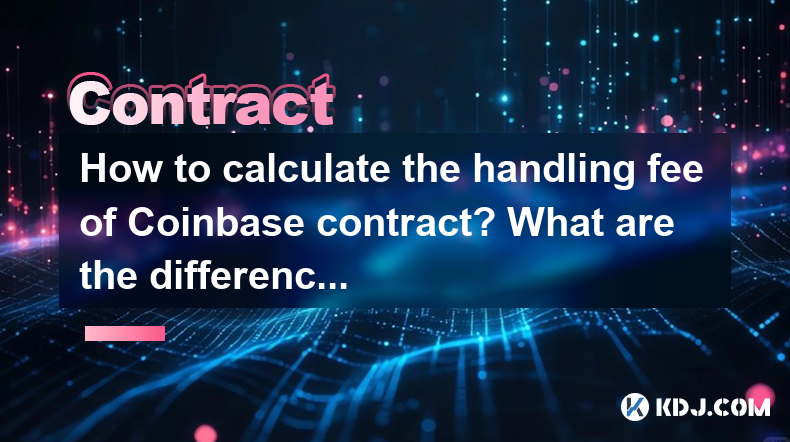
Introduction to Coinbase Contract Handling Fees
When trading on Coinbase, understanding the handling fees associated with the Coinbase contract is crucial for optimizing your trading strategy. Handling fees are charges applied to each transaction executed on the platform, and they vary based on different factors such as the type of transaction and the user's trading volume. This article will delve into how to calculate these fees and explore the differences between various fee levels, ensuring you have a comprehensive understanding of what to expect when using Coinbase.
What are Coinbase Contract Handling Fees?
Coinbase contract handling fees refer to the costs incurred when you execute trades, withdraw funds, or engage in other activities on the platform. These fees are essential for the operation of the exchange, covering costs such as transaction processing, security, and customer support. The fees are typically a percentage of the transaction amount and can vary based on the user's trading activity and the type of transaction being performed.
Factors Influencing Coinbase Contract Handling Fees
Several factors determine the handling fees on Coinbase, including:
- Trading Volume: Users who trade larger volumes often benefit from lower fees due to tiered fee structures.
- Transaction Type: Different types of transactions, such as buying, selling, or transferring cryptocurrencies, may have different fee rates.
- Payment Method: The method used to fund your account, such as bank transfers or credit cards, can also impact the fees you pay.
Understanding these factors is vital for accurately calculating and minimizing the fees you incur on Coinbase.
How to Calculate Coinbase Contract Handling Fees
Calculating the handling fees on Coinbase involves understanding the fee structure and applying it to your specific transactions. Here’s a step-by-step guide on how to do this:
- Identify the Transaction Type: Determine whether you are buying, selling, or transferring cryptocurrencies, as each type has a different fee structure.
- Check Your Trading Volume: Log into your Coinbase account and review your trading volume over the past 30 days. This information is crucial for determining your fee tier.
- Apply the Fee Rate: Use the fee rate applicable to your transaction type and trading volume to calculate the fee. For example, if you are buying Bitcoin with a trading volume that places you in the "Maker" fee tier, you would apply the corresponding maker fee rate to your transaction amount.
To illustrate, let’s say you are buying $1,000 worth of Bitcoin and your trading volume places you in the 0.50% maker fee tier. The handling fee would be calculated as follows:
[ \text{Handling Fee} = \text{Transaction Amount} \times \text{Fee Rate} ]
[ \text{Handling Fee} = $1,000 \times 0.50\% = $5 ]
Differences Between Different Levels of Fees
Coinbase offers different fee levels based on the user's trading activity, which can significantly impact the costs associated with using the platform. Here’s a detailed look at the differences between these levels:
- Taker Fees vs. Maker Fees: Coinbase uses a maker-taker fee model. Taker fees are charged when you take liquidity from the order book, typically when you place a market order. Maker fees are charged when you add liquidity to the order book, usually when you place a limit order. Taker fees are generally higher than maker fees.
- Volume-Based Tiers: Coinbase categorizes users into different volume-based tiers, with higher trading volumes resulting in lower fees. For example, a user with a 30-day trading volume of less than $10,000 might be in the highest fee tier, while a user with a volume over $50 million could be in the lowest fee tier.
- Coinbase Pro vs. Coinbase: Coinbase Pro, designed for more advanced traders, typically offers lower fees compared to the standard Coinbase platform. For instance, while Coinbase might charge a 0.50% fee for a transaction, Coinbase Pro might charge only 0.10% for the same transaction.
Understanding these differences allows you to choose the most cost-effective way to trade on Coinbase.
How to Minimize Coinbase Contract Handling Fees
Minimizing the handling fees on Coinbase involves strategic planning and understanding the platform's fee structure. Here are some strategies to help you reduce your fees:
- Increase Trading Volume: By increasing your trading volume, you can move to a lower fee tier, which results in reduced fees for your transactions.
- Use Coinbase Pro: If you are an active trader, using Coinbase Pro can significantly reduce your fees due to its lower fee structure.
- Opt for Limit Orders: Placing limit orders instead of market orders can help you avoid taker fees and benefit from lower maker fees.
- Consider Payment Methods: Some payment methods, such as bank transfers, often have lower fees compared to credit card transactions.
Implementing these strategies can help you save on handling fees and maximize your trading efficiency on Coinbase.
Frequently Asked Questions
Q: Can I negotiate handling fees with Coinbase?
A: Coinbase does not offer fee negotiation for individual users. The fee structure is standardized and based on trading volume and transaction type. However, by increasing your trading volume, you can move to a lower fee tier, effectively reducing your fees.
Q: Are there any hidden fees on Coinbase?
A: Coinbase is transparent about its fee structure, and there are no hidden fees. All fees, including handling fees, are clearly outlined in the fee schedule available on their website. It’s important to review this schedule to understand the costs associated with your transactions.
Q: How often does Coinbase update its fee structure?
A: Coinbase periodically reviews and updates its fee structure to reflect changes in market conditions and platform operations. Users are typically notified of any changes through email or platform announcements. It’s a good practice to check the fee schedule regularly to stay informed about any updates.
Q: Does Coinbase offer any fee waivers or discounts?
A: Coinbase occasionally offers promotions or discounts on fees, especially for new users or during special events. These promotions are usually time-limited and can help reduce the cost of trading. Keep an eye on Coinbase’s official communications to take advantage of any available fee waivers or discounts.
Disclaimer:info@kdj.com
The information provided is not trading advice. kdj.com does not assume any responsibility for any investments made based on the information provided in this article. Cryptocurrencies are highly volatile and it is highly recommended that you invest with caution after thorough research!
If you believe that the content used on this website infringes your copyright, please contact us immediately (info@kdj.com) and we will delete it promptly.
- XRP Price Shows Signs of a Bullish Recovery, With Analysts Watching Levels for an Upside Breakout
- 2025-06-14 04:50:12
- XRP Price Shows Signs of a Bullish Recovery, as Analysts Watch Levels for an Upside Breakout
- 2025-06-14 04:50:12
- Leading Cryptocurrencies Dipped Despite Lower-Than-Expected Inflation and the New Trade Deal Announcement with China.
- 2025-06-14 04:45:12
- XRP Price Prediction: Can the Token Reach $73 This Cycle?
- 2025-06-14 04:40:12
- Bitcoin Hashrate Reaches All-Time High, Exceeding 943 EH/s
- 2025-06-14 04:40:12
- Bitcoin Hits Local ATH but Analysts Warn: Time to Sell and Watch Key Support
- 2025-06-14 04:35:13
Related knowledge
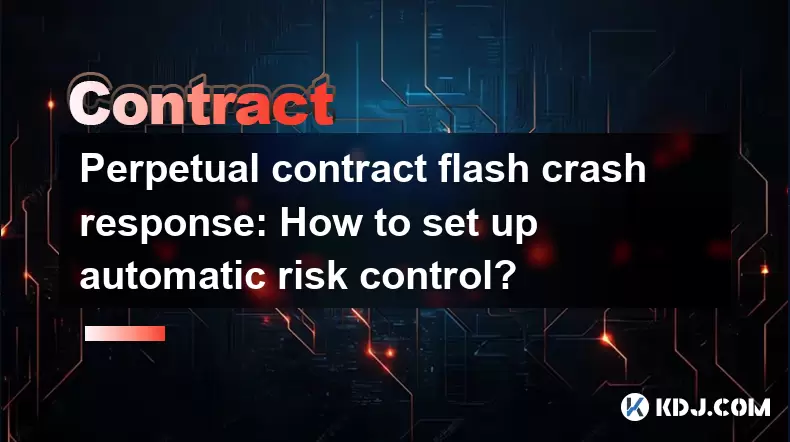
Perpetual contract flash crash response: How to set up automatic risk control?
Jun 13,2025 at 06:28pm
Understanding Perpetual Contract Flash CrashesA flash crash in the context of perpetual contracts refers to a sudden, sharp, and often short-lived drop or spike in price due to high volatility, thin order books, or algorithmic trading activities. These events can lead to massive liquidations across long or short positions on trading platforms. Traders m...
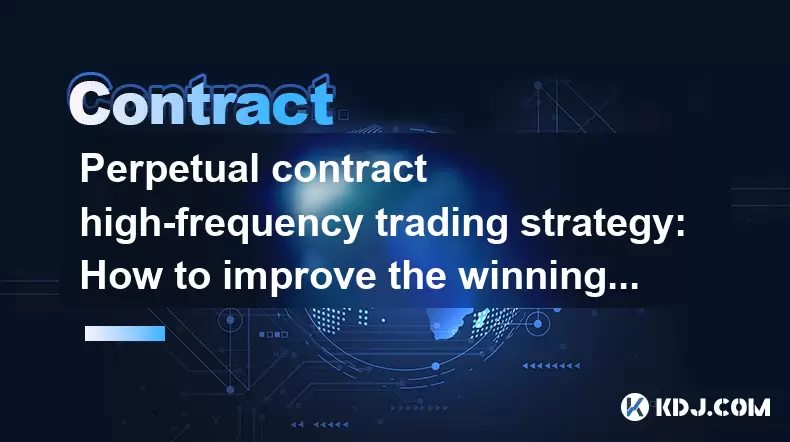
Perpetual contract high-frequency trading strategy: How to improve the winning rate of short-term brushing?
Jun 13,2025 at 04:14pm
Understanding the Basics of Perpetual ContractsPerpetual contracts are derivative financial instruments that allow traders to speculate on the price movement of an asset without owning it. Unlike traditional futures, perpetual contracts have no expiration date, making them ideal for short-term trading strategies like high-frequency trading (HFT). In the...
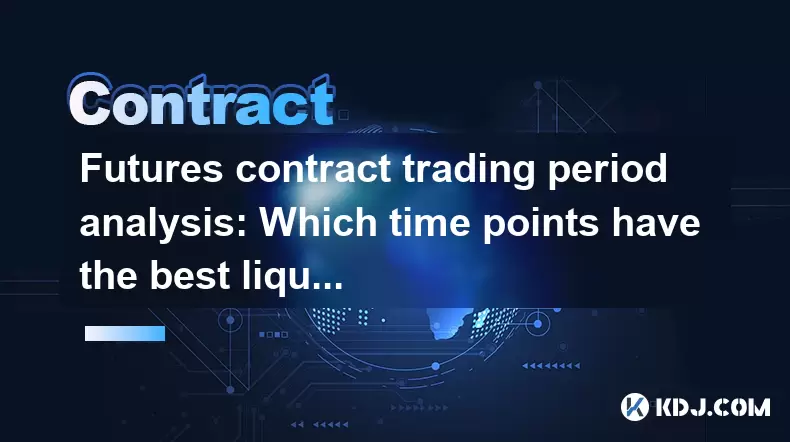
Futures contract trading period analysis: Which time points have the best liquidity?
Jun 14,2025 at 02:35am
Understanding Futures Contract Trading PeriodsIn the world of cryptocurrency trading, futures contract trading has become a dominant form of derivative trading. Unlike spot trading, futures contracts allow traders to speculate on the future price of an asset without owning it. The trading period of a futures contract typically includes several phases: p...
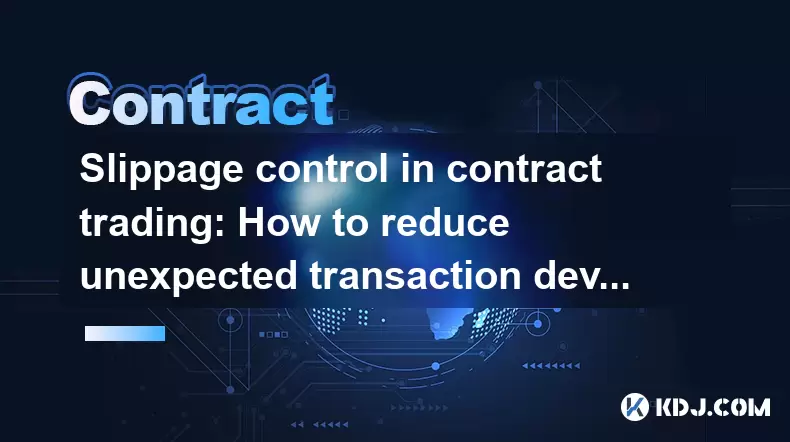
Slippage control in contract trading: How to reduce unexpected transaction deviations?
Jun 13,2025 at 03:00pm
Understanding the Role of Blockchain Explorers in CryptocurrencyIn the world of cryptocurrency, blockchain explorers serve as essential tools for users to verify transactions and track wallet activity. These platforms function like search engines specifically designed for blockchain networks. Whether you're sending or receiving digital assets, using a b...
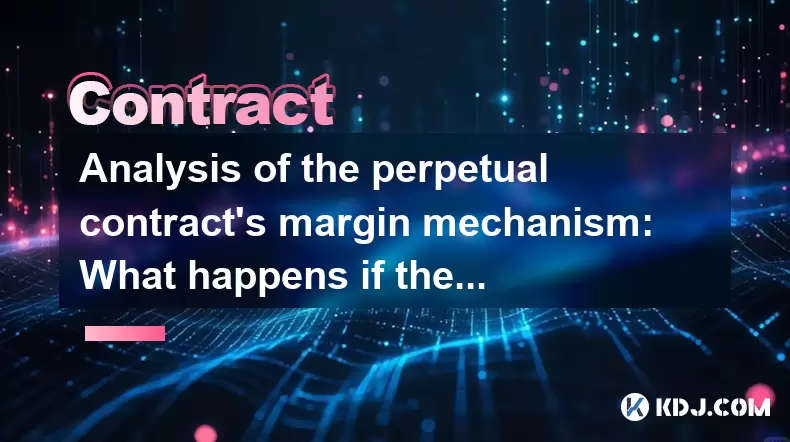
Analysis of the perpetual contract's margin mechanism: What happens if the loss exceeds the margin?
Jun 13,2025 at 03:50pm
Understanding the Basics of Margin in Perpetual ContractsIn the world of cryptocurrency trading, perpetual contracts have become a popular instrument for both novice and experienced traders. Unlike traditional futures contracts, perpetual contracts do not have an expiration date, allowing traders to hold positions indefinitely as long as they maintain s...
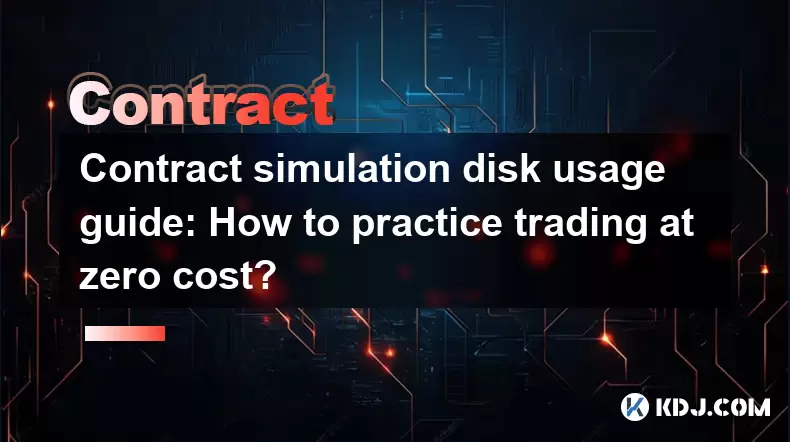
Contract simulation disk usage guide: How to practice trading at zero cost?
Jun 13,2025 at 02:42pm
What is a Contract Simulation Disk?A contract simulation disk, commonly known as a demo trading platform or paper trading environment, allows users to engage in cryptocurrency futures and options trading without using real funds. This feature is particularly popular among beginners who want to gain hands-on experience in the volatile crypto derivatives ...

Perpetual contract flash crash response: How to set up automatic risk control?
Jun 13,2025 at 06:28pm
Understanding Perpetual Contract Flash CrashesA flash crash in the context of perpetual contracts refers to a sudden, sharp, and often short-lived drop or spike in price due to high volatility, thin order books, or algorithmic trading activities. These events can lead to massive liquidations across long or short positions on trading platforms. Traders m...

Perpetual contract high-frequency trading strategy: How to improve the winning rate of short-term brushing?
Jun 13,2025 at 04:14pm
Understanding the Basics of Perpetual ContractsPerpetual contracts are derivative financial instruments that allow traders to speculate on the price movement of an asset without owning it. Unlike traditional futures, perpetual contracts have no expiration date, making them ideal for short-term trading strategies like high-frequency trading (HFT). In the...

Futures contract trading period analysis: Which time points have the best liquidity?
Jun 14,2025 at 02:35am
Understanding Futures Contract Trading PeriodsIn the world of cryptocurrency trading, futures contract trading has become a dominant form of derivative trading. Unlike spot trading, futures contracts allow traders to speculate on the future price of an asset without owning it. The trading period of a futures contract typically includes several phases: p...

Slippage control in contract trading: How to reduce unexpected transaction deviations?
Jun 13,2025 at 03:00pm
Understanding the Role of Blockchain Explorers in CryptocurrencyIn the world of cryptocurrency, blockchain explorers serve as essential tools for users to verify transactions and track wallet activity. These platforms function like search engines specifically designed for blockchain networks. Whether you're sending or receiving digital assets, using a b...

Analysis of the perpetual contract's margin mechanism: What happens if the loss exceeds the margin?
Jun 13,2025 at 03:50pm
Understanding the Basics of Margin in Perpetual ContractsIn the world of cryptocurrency trading, perpetual contracts have become a popular instrument for both novice and experienced traders. Unlike traditional futures contracts, perpetual contracts do not have an expiration date, allowing traders to hold positions indefinitely as long as they maintain s...

Contract simulation disk usage guide: How to practice trading at zero cost?
Jun 13,2025 at 02:42pm
What is a Contract Simulation Disk?A contract simulation disk, commonly known as a demo trading platform or paper trading environment, allows users to engage in cryptocurrency futures and options trading without using real funds. This feature is particularly popular among beginners who want to gain hands-on experience in the volatile crypto derivatives ...
See all articles

























































































